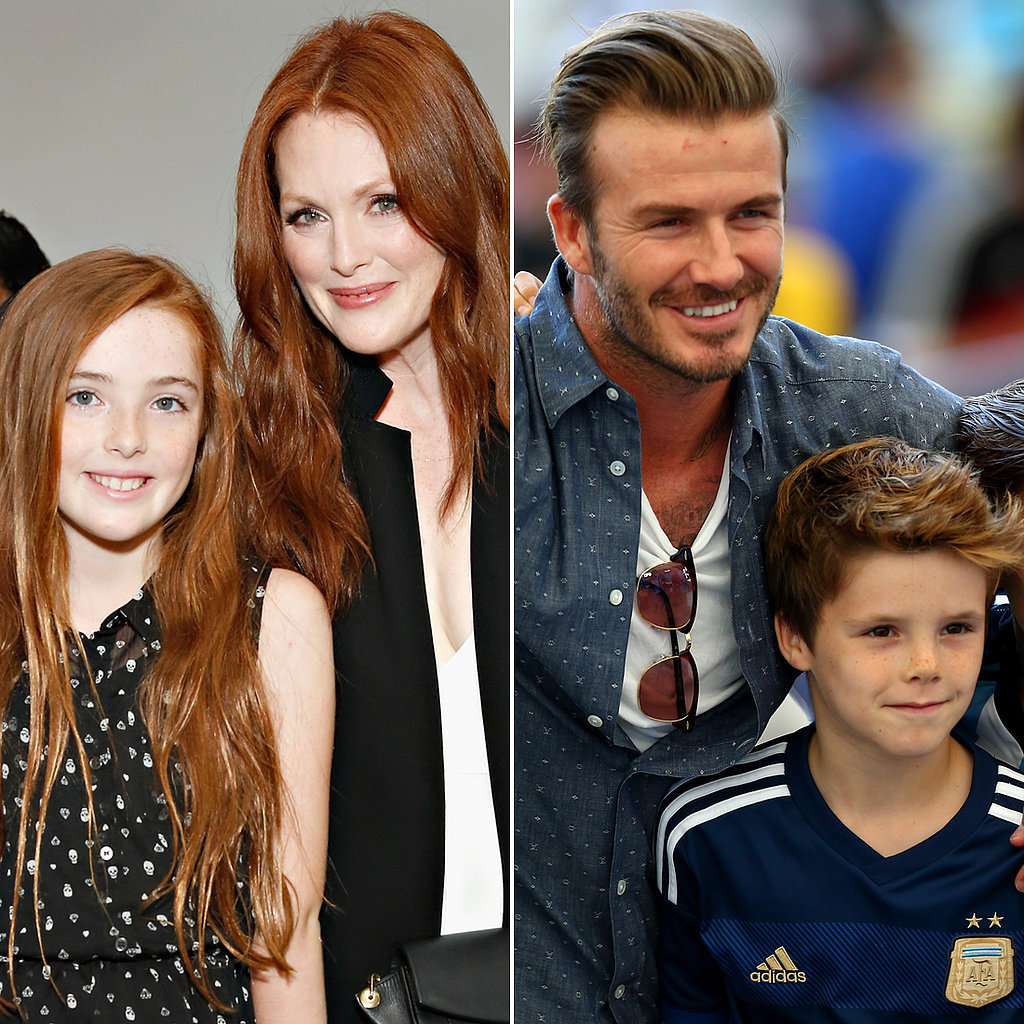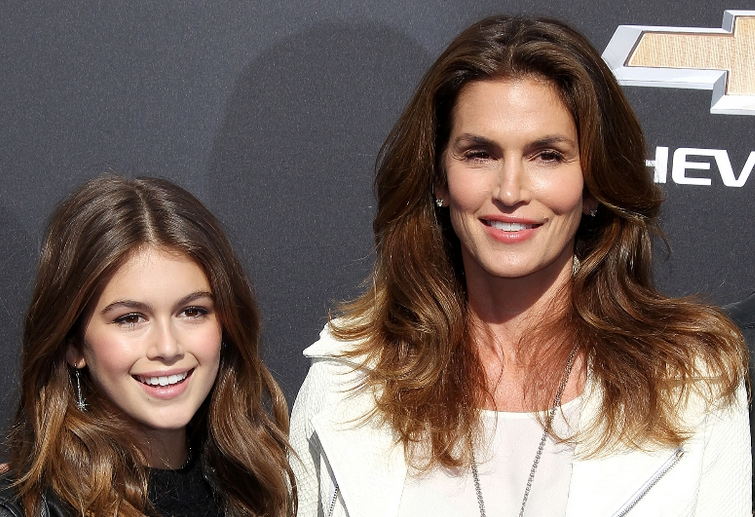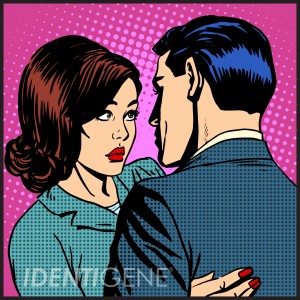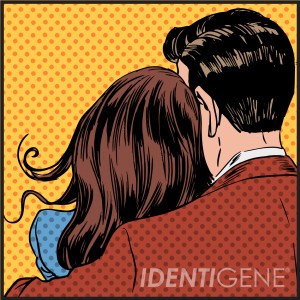Have you ever wondered why “Johnny” has blue eyes when the only person in the family who shares that same eye color is his great-grandpa on his mother’s side? How traits are passed from generation to generation is a fascinating topic for everyone and it’s also the life’s work of thousands of genetic scientists. The celebrity pics in this post show that children can look almost exactly like a single parent or a combination of both. But not always! That’s why it’s essential to have a paternity test, if there’s any question at all about who the biological father is.
As scientific methods improve, so does the world’s understanding of how genetics work; and the potential for what this knowledge can tell us now goes well beyond eye color! It all starts with DNA. Here’s a quick overview.
The Basics of Genetics for Non-Scientists
DNA is the building block for all living things and is responsible for everything about us, including the traits that make us different from one another. In a nutshell:
- DNA is packaged into thread-like structures called chromosomes inside human cells
- Each cell has 23 pairs of chromosomes, and for each pair, one comes from mom and one comes from dad
- Genes, located on these chromosomes, carry the information that determines a person’s traits
- Like chromosomes, genes also also come in pairs: one from mom and one from dad. These genes form the foundation for comparison when performing a paternity test, for example. Analysts can establish parentage or non-parentage by determining whether or not a child’s gene’s ‘match up’ to their mother’s and potential father’s
FUN FACT: Identical twins have the exact same DNA, which is why they look exactly alike!
Although 99.9% of people’s DNA is the same, how that DNA is ‘sequenced’ in our bodies (our own genome) is what makes us individuals and gives us each our unique look
 How Genetic Traits are Passed On in Families:
Where our Looks Come From
How Genetic Traits are Passed On in Families:
Where our Looks Come From
A person’s physical appearance is determined by genetic combinations from both parents. These can be broken down into dominant and recessive traits. Trait classifications can vary by race.
Dominant Traits
Dominant traits require only one copy of a dominant gene to outwardly express that trait. Some examples may include:
- Brown eyes
- Cleft chin
- Dimples
- Naturally curly hair
- Baldness
- Shortness
Recessive Traits
In order for recessive traits to be expressed outwardly, an individual must have two copies of a recessive gene: one from mom and one from dad. Some examples may include:
- Grey, green, hazel, and blue eyes
- Blonde hair
- Thin lips
- Rounded hairline
- No freckles
- Tallness
A child’s traits come from his parents, but his genome is also influenced by all the generations that came before them. Some traits skip a generation, and a child could end up looking a lot like a grandparent or a relative even further back on their tree! This is why ‘Johnny’ has blue eyes even though his parents don’t. So if you have questions of paternity, you can’t rely on whether or not a child ‘looks like’ or doesn’t look like his dad. Only a DNA paternity test can give you that answer for sure.
 Can Family Genetics influence the Likelihood of Illness?
Can Family Genetics influence the Likelihood of Illness?
Unlike the genes that determine how we look, complex traits can be more difficult to determine. ‘When geneticists look for evidence of genetic influence on a disease, they look for families that have many affected over several generations’ (The American Society of Human Genetics). It is important to note that genes do not cause disease, but they can increase a probability that a person may develop one. The genetic predispositions to certain conditions being actively studied include:
- Cancer
- Diabetes
- Heart disease
- Mental illness
Genetics: Mutations and Family
Actress Angelina Jolie famously had pre-emptive surgeries after doctors discovered she had a high likelihood of developing the same type of cancer that claimed the lives of her mother, aunt and grandmother. This strong family history comes from a mutation of the BRCA 1 gene (Monti).
Other factors besides genetics, such as lifestyle choices and environment, also affect the likelihood of getting these types of diseases (Genetics Home Reference).
Some congenital conditions, like Cystic Fibrosis, are caused by a genetic mutation in a family’s genome. Once introduced, that mutation can then be passed down to future generations.
What if a Mutation Shows in your Paternity Test Results?
Paternity testing analyzes so-called “junk DNA,” which doesn’t code for any physical traits whatsoever. So if a mutation is noted on a results report for paternity, no worries! It was not inherited from either parent, and the existence of the mutation is calculated into the probability of paternity too.The Bottom Line
Genes are a powerful influence both in determining how we look as individuals and possibly even health predispositions for families across generations. You no longer have to wonder why Johnny has blue eyes, all the Smiths have curly hair, or how the Jones kids got so tall-now you know! Just remember, although physical traits can indicate a family relationship, some kids with the same parents may still look completely different from the other children. It’s kind of like a genetic lottery, and yet more proof that ‘looks aren’t everything!’
Do you think we’re mostly products of genetics, environment, or a combination of both? Let us know in the comments below.
Follow us on Facebook and Twitter! If you have questions about paternity tests or other DNA testing services, please contact our Client Support Center at 888-404-4363, Mon-Fri from 8:30 AM to 5:30 PM Eastern Time. Our friendly, expert representatives are ready and happy to help. Get answers anytime by visiting our Help Center.
RESOURCES
“Six Things Everyone Should Know About Genetics | ASHG.” ASHG Twitter. The American Society of Human Genetics, n.d. Web. 27 Oct. 2015.
“Genetics and Social Science.” How Is Genetic Information Transmitted from One Generation to the Next? Genetics and Social Science, n.d. Web. 27 Oct. 2015..
“Inheritance of Traits by Offspring Follows Predictable Rules.” Nature.com. Nature Publishing Group, n.d. Web. 27 Oct. 2015.
“What Is a Gene?” KidsHealth. Ed. Vivien L. Narcisa. The Nemours Foundation, 01 Mar. 2014. Web. 27 Oct. 2015.
“GENOMES.” What’s a Genome? Department of Health and Human Services, 26 Oct. 2015. Web. 27 Oct. 2015.
“What Does It Mean to Have a Genetic Predisposition to a Disease?”Genetics Home Reference. Department of Health and Human Services, 26 Oct. 2015. Web. 27 Oct. 2015.









